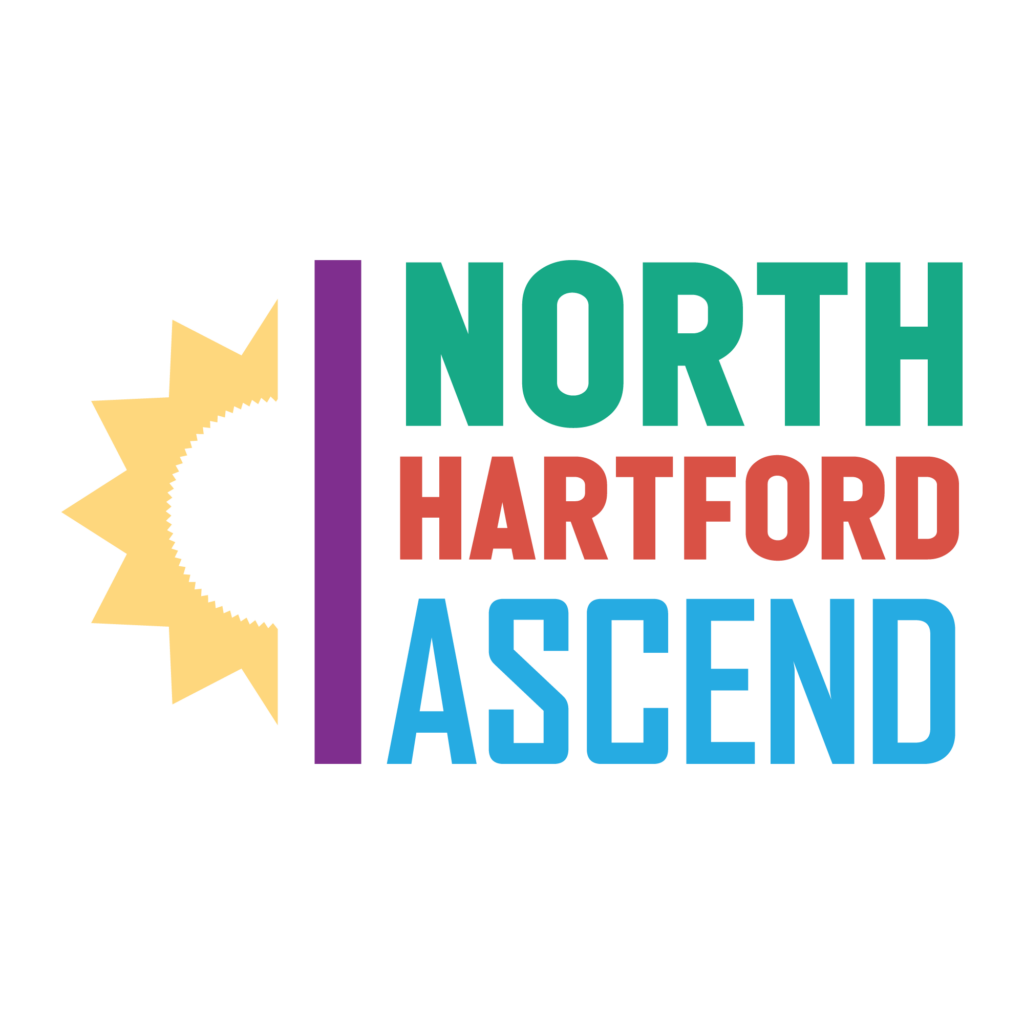CO-DESIGNING WITH COMMUNITY & RESIDENTS
CT DATA COLLABORATIVE
CT Data Collaborative (CT Data) seeks to connect individuals and communities with data to promote informed decision-making and to advance equity in Connecticut.
PARTNERING WITH THE LAB
In 2023, CT Data introduced the first draft of the Community Resource Map (the Map) [then titled the “Neighborhood Profile & Mapping Project”] to the North Hartford Ascend Family Navigation Work Group. In response to an identified community priority, the interactive tool visually presents North Hartford Ascend providers by service category and developmental stage using a geospatial information system. The Map was designed to be widely used and accessed by family navigators, providers, and residents in the community so as to improve outreach, inform program strategies, and increase awareness and access to community resources. To optimize the design of the tool, specifically its utility and content, CT Data and Childhood Prosperity Lab (the Lab) partnered to co-design the Map with residents in the community.
OUR METHODOLOGIES
The Lab, in partnership with United Way of Northeastern and Central Connecticut and CT Data Collaborative, recruited a total of seven residents to participate in the focus group. Residents who are actively engaged with North Hartford Ascend were asked to participate based on their familiarity with Ascend and the goals of the initiative. An activity structured by a Rose, Thorn, Bud methodology was facilitated by a Program Specialist from Childhood Prosperity Lab, a certified Human-centered Design practitioner. The session was held in-person at Hartford Public Library Albany Branch from 5:00-7:00pm. Before the session began, residents shared a meal catered by The Chrysalis Center. The facilitator level-set the activity by describing the purpose of Rose, Thorn, Bud. Participants independently brainstormed their feedback for a total of 30 minutes before coming back together for a larger group discussion. At the end of the session, each participant received a $75 VISA gift card for their time and expertise.
KEY FINDINGS
Participant Feedback:
- Accessing and navigating the tool on a computer was more user-friendly than mobile devices. Consider strengthening the use of the tool on mobile devices, recognizing that it will need to be used by residents on the bus and other public spaces where computers are unavailable.
- Consider simplifying the language and information.
- Menu tabs on the landing page are helpful (content-wise).
- Lead with the program name/s rather than the agency name/s when inventorying resources. Residents are familiar with organizations but less familiar with the programs and services embedded within those organizations.
OUR IMPACT
In a follow-up survey, CT Data project partners agreed that the Human-centered Design approach helped them to achieve their project outcomes. Feedback from the community co-design session prompted CT Data to abandon the tool’s platform [at the time] in pursuit of a software that was more mobile friendly. CT Data also reconfigured the layout of the tool’s content, categorizing the top four tabs as: About, Map View, Ascend Partners Table, and Resources Table.
LEARN MORE ABOUT THE LAB
The Lab values engaging children, families, communities, and other key stakeholders as thought leaders and partners in the design of social innovations that support their health, development, and well-being. The Lab defines Human-Centered Design (HCD) as a methodological framework for centering the needs, goals, and perspectives of children, families, communities and other key stakeholders in the design, implementation, and evaluation of social innovations. Team members from the Lab are certified Human-centered Design Practitioners, specializing in the thirty-six methods that comprise the LUMA Framework.
Rose, Thorn, Bud is a methodology for “analyzing a set of data or to help scope a problem by revealing key focus areas” according to the LUMA Institute. The Lab operationalizes this methodology through the lens of strengths (roses), challenges (thorns) and opportunities (buds).
STAY CONNECTED
- Email: childhoodprosperitylab@connecticutchildrens.org
- Facebook: Connecticut Children’s Community Child Health
- LinkedIn: Connecticut Children’s Office for Community Child Health
